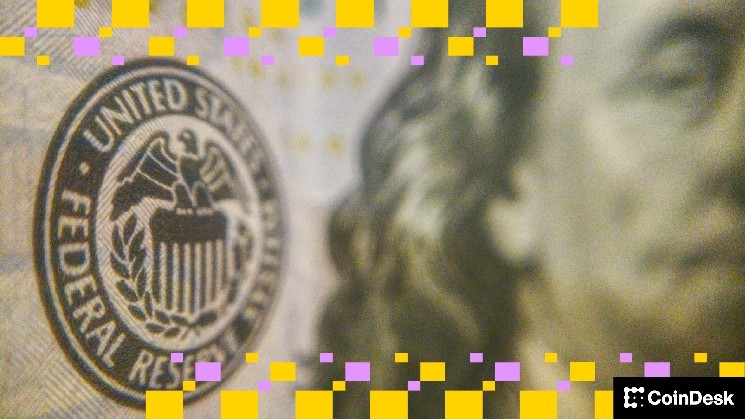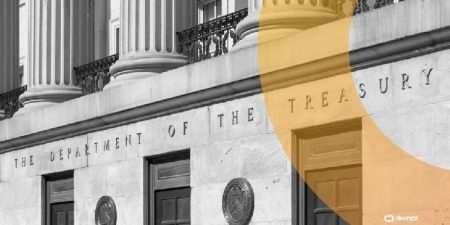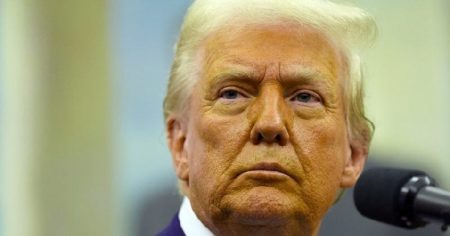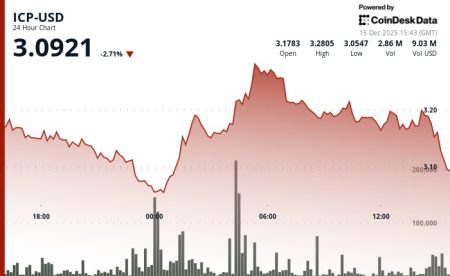Fed’s Hawkish Rate Cut Sends Mixed Signals to Financial Markets
Powell’s Surprise Stance on December Rate Cut Triggers Market Turbulence
The Federal Reserve accomplished what many analysts thought impossible this week: cutting interest rates while simultaneously delivering a hawkish message that sent shockwaves through global financial markets. What initially appeared to be a standard monetary policy adjustment quickly transformed into a significant market event when Fed Chairman Jerome Powell delivered an unexpected message during Wednesday’s post-meeting press conference. Powell emphatically pushed back against market assumptions that a December rate cut was guaranteed, triggering immediate volatility across asset classes that extended well into the following trading sessions.
“We’re not on a preset course,” Powell stated firmly, challenging the financial market’s confidence in a steady progression of rate cuts. “We’re going to be making these decisions meeting by meeting, based on the incoming data and the evolving outlook and the balance of risks.” This carefully calibrated language represented a stark departure from the more dovish tone many investors had anticipated, especially given recent economic data showing some cooling in the labor market. The reaction was immediate and pronounced – cryptocurrency markets retreated sharply from recent highs, with Bitcoin pulling back from record levels, while U.S. equities experienced their most significant sell-off in months. The S&P 500 and Nasdaq Composite both posted substantial losses as traders hastily recalibrated their expectations for the future interest rate trajectory.
Rare FOMC Dissension Highlights Policy Disagreements Within Federal Reserve
Adding to the market’s unease was an unusual split within the Federal Open Market Committee (FOMC) itself. Typically characterized by consensus and unanimity in policy decisions, Wednesday’s vote featured notable dissent that further underscored internal disagreements about the appropriate monetary policy path. Kansas City Fed President Jeff Schmid voted against the rate cut entirely, preferring to hold policy steady – a rare break from the committee’s usual solidarity. Meanwhile, Fed Governor Stephen Miran pushed in the opposite direction, advocating for a more aggressive 50 basis point reduction instead of the approved 25 basis point cut. While Miran’s position wasn’t entirely surprising – he had similarly dissented at the previous meeting since his recent appointment by President Trump – Schmid’s opposition represented a significant development that markets couldn’t ignore.
This public display of policy disagreement marked the first time since September 2022 that the FOMC featured dissenting votes in both hawkish and dovish directions simultaneously. The three-way split vote underscored the complex economic landscape facing policymakers as they attempt to navigate competing concerns about inflation persistence, labor market health, and overall economic momentum. “The committee is clearly wrestling with difficult tradeoffs in an uncertain environment,” noted Michael Pearce, deputy chief U.S. economist at Oxford Economics. “This level of disagreement suggests the Fed’s future policy path may be more data-dependent and less predictable than markets had been pricing in.”
Inflation Concerns Remain Central to Fed’s Cautious Approach
In an unusual move that further amplified the hawkish tone, Kansas City Fed President Jeff Schmid published a short essay on Friday explaining his rationale for voting against the rate cut. His commentary focused primarily on persistent inflation concerns, questioning the necessity of monetary easing given current financial market conditions. Schmid pointedly referenced equity markets at all-time highs, narrow corporate bond spreads, and robust high-yield bond issuance as indicators that financial conditions were already quite accommodative. His most compelling argument, however, centered on inflation, which has remained stubbornly above the Fed’s 2% target for years and has recently shown signs of plateauing rather than continuing its downward trajectory.
“I take small comfort in most measures of inflation expectations having not moved up,” Schmid wrote, highlighting the potential risks of premature policy easing. His essay reflected a growing concern among some Fed officials that the inflation battle remains incomplete, despite progress from the peak levels seen in 2022. Recent data has shown that while headline inflation has moderated significantly, core services inflation remains elevated, particularly in sectors like housing and healthcare. This inflation persistence presents a challenging backdrop for policymakers who must balance addressing deteriorating labor market conditions without reigniting price pressures. Schmid’s commentary suggests a willingness among some Fed officials to accept some labor market weakening as a necessary trade-off to ensure inflation returns durably to target, particularly if they view current challenges as stemming from “structural changes in technology and demographics” rather than insufficient monetary accommodation.
Markets Recalibrate Rate Cut Expectations After Fed’s Hawkish Pivot
The combination of Powell’s cautious rhetoric and Schmid’s explicit inflation warnings prompted a significant recalibration of market expectations regarding future interest rate policy. By Friday morning, rate traders had dramatically reduced their confidence in a December rate cut, pricing in just a 66% probability compared to nearly 95% prior to Wednesday’s events. This substantial shift in expectations came despite attempts by equity markets to stage a recovery following Thursday’s sell-off. The recovery proved fragile, with Bitcoin retreating below $110,000 and Nasdaq futures trimming earlier gains after Schmid’s essay circulated among traders.
“What we’re witnessing is a healthy reality check for markets that had become overconfident in predicting the Fed’s policy path,” explained Sarah Johnson, chief market strategist at Capital Insights. “The Fed is clearly signaling they remain data-dependent and will not be pressured into a predetermined cutting cycle if inflation data doesn’t cooperate.” This recalibration extends beyond short-term rate expectations, potentially impacting longer-term investment strategies that had been positioned for an accelerated easing cycle. Bond markets have responded with a flattening yield curve, as short-term yields rose relative to longer-term rates – typically a signal that markets are pricing in a more restrictive policy environment than previously anticipated. The dollar index strengthened against major currencies, reflecting the relative hawkishness of the Federal Reserve compared to other global central banks that have already embarked on more aggressive easing cycles.
Economic Crosscurrents Create Policy Dilemma for Federal Reserve
The Federal Reserve’s cautious approach reflects the complex economic crosscurrents currently shaping the U.S. economy. On one hand, the labor market shows increasing signs of softness, with the unemployment rate having risen from its cyclical low of 3.4% to 4.1% currently. Job creation has slowed from its post-pandemic boom, and layoff announcements have increased across various sectors. These labor market developments typically would warrant policy accommodation to prevent a more serious deterioration that could undermine the broader economic recovery.
However, countering these concerns is the remarkable resilience in consumer spending, housing market activity despite elevated mortgage rates, and overall economic growth that continues to expand above long-term trend rates. Corporate earnings have generally exceeded expectations, and financial conditions – as Schmid highlighted – remain accommodative by historical standards. This economic resilience provides the Fed with the flexibility to maintain a more measured approach to rate cuts, especially while inflation concerns linger. “The Fed is navigating between the Scylla of inflation that hasn’t fully returned to target and the Charybdis of a labor market that’s showing signs of weakness,” noted economics professor Elizabeth Crawford at Georgetown University. “This policy balancing act will likely continue to create volatility in markets as investors digest each new piece of economic data through the lens of how it might influence the Fed’s next move.” As the December meeting approaches, market participants will be closely monitoring upcoming inflation reports and labor market data, recognizing that the policy path is far less certain than it appeared just days ago.
The Federal Reserve’s balancing act between fighting inflation and supporting employment has entered a new phase, one where the certainty of continued rate cuts can no longer be taken for granted. As Powell emphasized, policy decisions remain data-dependent, leaving financial markets to adjust to a reality where the path of monetary policy may be more variable and less predictable than many had assumed. For investors, traders, and economic stakeholders, the message is clear: the Fed’s inflation mandate remains paramount, and the journey back to price stability may still feature unexpected twists and turns before reaching its destination.















